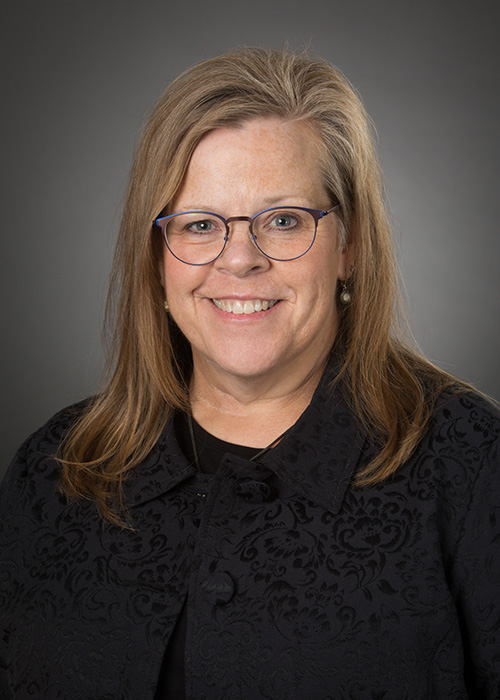Safe Driving for Older Adults
The CarFit program helps ensure aging adults maintain safety behind the wheel

Driving is an important part of community mobility
The loss of independence is one of the hardest things to accept as we age. According to the United States Census, the population of adults 65 and older grew by more than a third throughout the past decade. People are living longer and remaining more active as they age.
We spoke with Belinda Alexander, OTR, OTD, about strategies older adults can use to
ensure they are safe behind the wheel and can continue to enjoy the independence of
driving.
Alexander is an Assistant Professor in the Occupational Therapy Program of the TTUHSC
School of Health Professions.
She also participates in CarFit, an educational program that helps promote safe driving for older adults by addressing the safety and fit of their personal vehicle. Community mobility is an important instrumental activity of daily living (IADL) that OT’s are skilled at addressing. Driving is an important part of community mobility and students study the impact community mobility has on one’s activity levels, engagement in meaningful activities, and health and well-being. OT students in the TTUHSC School of Health Professions are given the opportunity to volunteer to participate in the CarFit technician training and then participate in a local CarFit event. Having the CarFit technician training is something that some of our graduates can take with them to their future work settings with the hopes of educating more older adults in the aspects of safe driving.
The Effects of Aging and Mobility on Safe Driving
“From the moment we enter the world, we are getting older,” Alexander begins. “It’s the natural process of life that our bodies in our 60s and 70s aren’t like our bodies were in our 20s.”
Eventually, we will all have to adjust. When it comes to driving, this means learning to adjust to your physical changes to maintain safety. It also means learning to accept and prepare for the day when you won’t be able to drive any longer, which can be very difficult.
“Our vision can decline, our bodies change. Flexibility, mobility, strength, posture, and the ability to enter and exit the vehicle can be impacted by the natural progression of life,” Alexander says. “Those are the areas we look at.”
Misconceptions of Older Drivers
One of the most common forms of ageism is that older drivers are inherently unsafe on the road. Alexander is quick to point out the need to be respectful of the changes that an aging body undergoes.
“We need to remember that these older adults have been driving for a very long time
and have a lot of experience,” she says. “They tend to be more cautious because they
have gotten recklessness out of their system.”
Alexander points out that the death rates in car accidents are elevated in older adults,
but this is due to the physical changes and other comorbidities more so than unsafe
driving.
What is CarFit?

Belinda Alexander, OTR, OTD
“CarFit is a screening for older adult drivers for the purpose of keeping them safe in their vehicle and making sure they’re fitted to their vehicle in the best way possible,” Alexander says.
The community-based educational program was created in 2006 in collaboration with the American Automobile Association (AAA), AARP and the American Occupational Therapy Association (AOTA).
While one doesn't have to be an Occupational Therapist to be trained as a CarFit technician, an OT is present at CarFit events and screenings to review the completed CarFit checklist and to make any recommendations for adaptive devices that might assist with driver safety and fit within their vehicle.
During CarFit events and one-on-one screenings, “Everything is a suggestion, and nothing is forced on the driver,” Alexander says. “It takes place with the vehicle, and CarFit representatives will make recommended changes if the driver chooses to allow them.”
Adjustments could be made to the positions of the mirrors, steering wheel, headrests and seats.
“We look at the airbag. If you’re too close to an airbag, there can be injuries,” Alexander cautions.
“Some older adults aren’t sure about all the buttons, gadgets and adjustability that cars have,” she says. “So, sometimes we simply help the driver become more comfortable with some of the safety features and adjustable components in their vehicle.”
The screening follows a checklist that takes 20-30 minutes and can be extended if needed. Alexander says the experience is designed to be efficient but also flexible enough to answer any questions or concerns the driver might have.
Part of the vehicle inspection includes looking for any damage that could be an indication that the driver may not be as safe as they once were.
Planning for Loss of Mobility
Alexander recommends planning for independence and mobility in the same way you plan
for retirement. It’s important to accept the truth that we are all aging and to be
as prepared as possible to maintain the life you want to live.
It may mean becoming comfortable with current ridesharing apps or finding a car service
you are comfortable with so that you can continue to engage in the community activities
that are important to you and that you enjoy.
“Nobody wants to give up their independence,” Alexander says. Having this discussion with a loved one or facing it yourself can be a very challenging experience. Not everyone will be faced with driving retirement, but if you are, its best to plan ahead. Identify your community’s available transportation options or seek the advice from an OT professional that can help you navigate your community mobility options so that your quality of life doesn’t have to decline because you are no longer driving.
Related Stories
TTUHSC Dean to be Inducted into the National Academies of Practice as Distinguished Fellow
Gerard E. Carrino, Ph.D., MPH, dean of the TTUHSC Julia Jones Matthews School of Population and Public Health, will be inducted into the National Academies of Practice (NAP) as a Distinguished Fellow of the Public Health Academy.
TTUHSC School of Nursing Celebrates 10-Year Anniversary of the Abilene Community Health Center
The TTUHSC School of Nursing hosted a 10-Year Anniversary Celebration and Open House for the Abilene Community Health Center. The center is one of 71 Federally Qualified Health Centers (FQHCs) in Texas according to the Texas Health and Human Services.
TTUHSC Receives $1.3 Million HRSA Telehealth Resource Center Grant to Expand Telehealth in Texas and Louisiana
The TexLa Telehealth Resource Center, based at TTUHSC, has been awarded a $1.3 million, four-year grant from HRSA to strengthen and expand digital health services in Texas and Louisiana.
Recent Stories
TTUHSC Cancer Researcher Honored by National Academy of Inventors
C. Patrick Reynolds, M.D., Ph.D., director of the School of Medicine Pediatric Cancer Research Center at TTUHSC, has dedicated his life as a researcher to developing treatments for childhood cancers.
TTUHSC School of Nursing Celebrates 10 Years of the Veteran to BSN Program
The TTUHSC School of Nursing recognized the 10-year anniversary of the Veteran to Bachelor of Science in Nursing (VBSN) program during the fall 2025 commencement ceremonies held Dec. 13 in Lubbock, Texas.
TTUHSC Dean to be Inducted into the National Academies of Practice as Distinguished Fellow
Gerard E. Carrino, Ph.D., MPH, dean of the TTUHSC Julia Jones Matthews School of Population and Public Health, will be inducted into the National Academies of Practice (NAP) as a Distinguished Fellow of the Public Health Academy.
